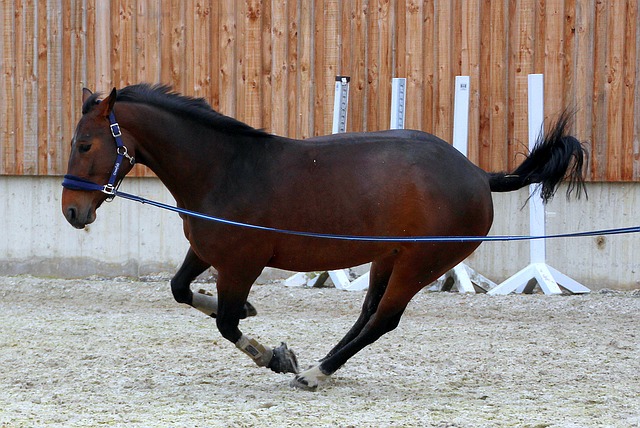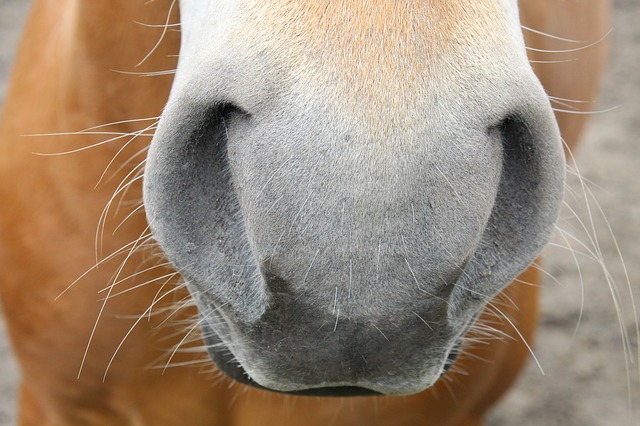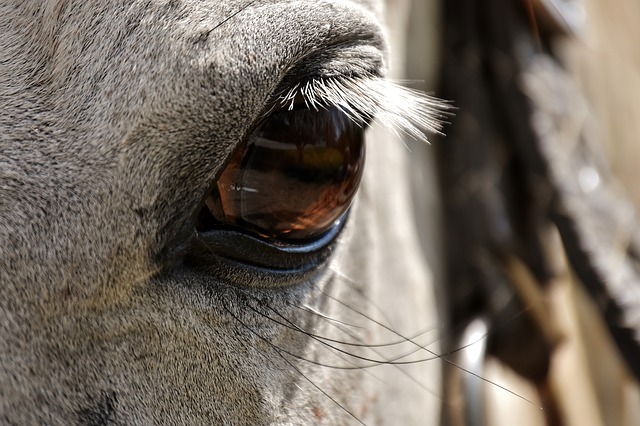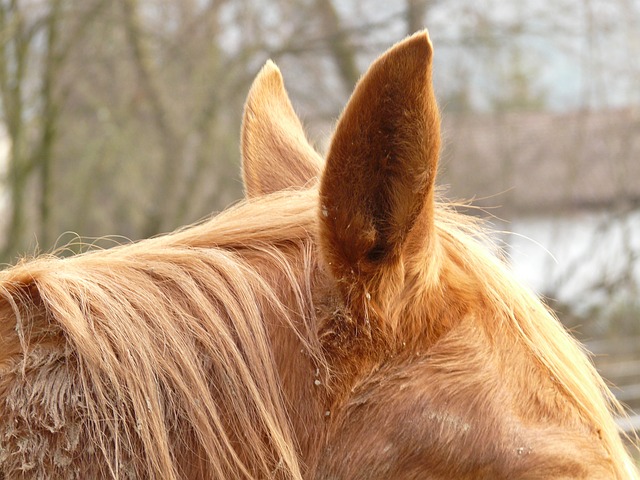Wouldn’t it be nice if you knew what your horse was thinking? Well, you don’t have to be psychic to know what is going on in their minds. All you need to know is how to read their body language. The body language of a horse is unique to horses. As a highly social animal, horses communicate their emotions and intentions to their herd members through both vocalization and body language. As a person handling horses, it’s our job to understand and read what our horses are trying to say to us.
Vocal Communication
Horses communicate in a variety of ways that include both vocal and non-vocal (body language) communication. Vocal communication includes:
- Nickers are a low-pitched, quiet sound. My horse makes this sound to greet me when I arrive at the barn. Stallions will nicker when courting a mare and you will hear a mare and foal nicker to each other.
- Neighs or whinnies are the most familiar sound and are high pitched, drawn out calls that can carry over distances. Horses will whinny to let others know where they are and to try to locate a buddy. They also will also respond to each other’s whinnies when they hear it.
- Blowing is a strong, rapid expulsion of air resulting in a high pitched “whooshing” sound, This is usually a sign of alarm used to warn others.
- Snorting is a more passive, shorter lower pitched version of blowing. My horse will make a snorting sound when something unknown enters her space, like a wayward turtle crawling into her pasture. Snorting can also be just a result of objects entering the nasal passage.
- Squealing or screaming usually denotes a threat by a stallion or mare.
Body Language
Because people rely so much on verbal communication, it’s natural for us to focus on the sounds a horse makes when trying to figure out what they are saying.
The body language of a horse is unique to the equine species. Being highly social animals, horses are good at letting us know exactly how they are feeling. The only problem is most people don’t know how to speak “horse” Horses communicate their emotions and intents to their herd mates and in turn to us through their body language.
As a person handling horses it is important to be able to read the horse’s body language to be effective. If you see someone who is really good at reading the body language of a horse, it seems almost magical, kind of like they are reading the horse’s mind. But in reality, they’re noticing and responding to the subtlest of cues from the horse.
You can learn to tune in to their unique forms of communication. A better understanding of the language of horses will improve your horsemanship skills, and you’ll be able to read your horse more clearly and fine-tune your training and handling accordingly. Horses use their entire body to communicate including their:
- Nose (Nostrils) and Mouth (Muzzle)
- Eyes
- Ears
- Neck and Head Carriage
- Feet and Legs
- Tail
- Overall Posture
Nose (Nostrils) and Mouth (Muzzle)
A relaxed horse has a loose soft nostril with no ridging and a loose lower lip. Beyond the vocal communication, a horse’s nose and mouth can tell you several things about what he’s feeling. For example, mares and foals will often use their muzzle to nudge and nuzzle each other during nursing or for comfort. You will also see mutual grooming between when two horses who nibble at each other’s withers and backs.
Drooping lip or slack mouth. A horse standing quietly with his lower lip drooping may be relaxing or even asleep. If you approach him, do so cautiously and call his name to avoid startling him. Once he’s awake and moving around, his lip should return to normal.
Licking and Chewing. If your horse is licking and chewing when you are working with him, then this is a good sign! It indicates that he’s relaxed, thinking, and learning.
Clacking teeth or “Snapping”. A foal will sometimes raise his neck, push his head forward, curl his lips and click his teeth together. This is a sign that the foal is showing submission to an older horse. They will open their mouths and draw back the corners, then open and shut their jaws. Normally, they stop doing this by the time they’re 2 or 3 years old.
Flehmen Response. A horse exhibiting the Flehmen Response will stick their nose in the air and curl their upper lip over their nose, breathe in and blow air back out. The Flehmen Response is usually caused by an intense or unusual smell and allows the horse to push the scent particles through a structure in his nose called the vomeronasal organ (VNO). The VNO enables horses to better detect chemicals in the air. You will also see this in stallions when they sense a mare in heat but all horses will do this when they smell something unusual and they’re trying to get more information.
Flared nostrils. Flared nostrils usually mean that the horse is excited or alert. A horse will also flare his nostrils wide to draw in more air as he exercises. The flare may continue for a short time afterward. At other times, a horse’s nostrils may flare and even quiver when he is startled or nervous. This behavior can escalate to the horse trying to get away by pulling back or bolting,
Tight, pinched or pursed mouth or muzzle. Tension around the mouth tells you your horse is worried, stressed or scared. This is a subtle sign and can be easily missed. Remove your horse from the situation or help him work through the stress or fear so he won’t more obvious behaviors like trying to flee.
more obvious behaviors like trying to flee.
Gaping mouth with visible teeth. Jaws open with teeth exposed is a sign of aggression or possible attack. If the horse also pins his ears and you can see white around his eyes, he’s angry and probably seconds away from biting you or another horse. Move out of his way immediately to avoid being hurt.
On the other hand, if his mouth gapes open while he is being ridden, he may be in pain. Check the fit of your bridle and bit. You may want to schedule a dental examination to make sure his teeth aren’t hurting him.
Lastly, if your horse stops eating and stands with his neck stretched out and his mouth gaping, he may be choking. This is an emergency. Remove the uneaten food and call your veterinarian immediately.
Touching you. A horse that reaches out to touch you with his muzzle may be just curious and checking you out or he could be trying to nip or bite you. Another possibility is that he’s nervous and needs a little reassurance. This is one of those times when you need to know your horse to distinguish the difference.
Eyes
A horse’s vision is its primary detector of danger. They can instantly change their focus from near to far objects. You will see horses cock their head in different ways to see close vs. distant objects.
Horses have an extraordinary ability to detect movement. This is why a horse is much flightier on windy days. Things that are normally stationary are now moving and can be perceived as a potential threat. Horses are able to see fairly well at night. However, their contrast sensitivity is less than that of a cat.
Although their eye sight is keen, horses actually have poor color vision. They can differentiate blue and red from gray, but have trouble differentiating yellow and green from gray.
Horses also have poor depth perception when only using one eye. They can’t tell a trailer from an endless tunnel, or a mud puddle from a bottomless lake. Their depth perception is improved by about 5 times when using both eyes.
Horses can see almost panoramically, with a small spot directly in front and directly behind as their blind area. A horse can also see two things at once, one from each eye. This allows each side of its brain to work separately.
Like humans, horses have a dominant side (right-handed or left-handed). However, unlike humans, horses need to be taught things twice, on the right side and on the left side. This is why it’s important to switch sides when teaching your horse anything.
The expression in a horse’s eye is often thought to be a good indicator of their behavior. A relaxed horse has a soft eye, with no wrinkling above the eye lid. The movements of your horse’s eyes tell you not just what he’s thinking but also where his attention is focused.
Like humans, horses have a dominant side (right-handed or left-handed). However, unlike humans, horses need to be taught things twice, on the right side and on the left side. This is why it’s important to switch sides when teaching your horse anything.
The expression in a horse’s eye is often thought to be a good indicator of their behavior. A relaxed horse has a soft eye, with no wrinkling above the eye lid. The movements of your horse’s eyes tell you not just what he’s thinking but also where his attention is focused
Showing white around the eyes. This usually means they are angry or scared. (White around the eyes is also a normal characteristic of the Appaloosa breed and some pinto breeds.)
Tension. As with tension around the muzzle, tightening of the muscles around the eyes can be a subtle sign of stress, fear or discomfort. You may see this as a wrinkled upper eyelid or tightness at the corner of the eye.
Rapid darting. When your horse’s eyes are flicking from side to side, he’s probably scared and looking for a way to escape. This sign may precede a spook or bolt, but if your horse feels trapped he may react by biting or kicking in an attempt to get away.
Ears
A horse’s hearing is much keener than ours. They use their hearing for three primary functions: to detect sounds, to determine the location of the sound, and to provide sensory information that allows it to identify the source of the sound.
Horses can hear low to very high frequency sound, in the range of 14 Hz to 25 kHz (human range = 20 Hz to 20 kHz). Horses’ ears have the ability to move 180 degrees using 10 different muscles (vs. 3 for the human ear) and they are able to single out a specific area to listen to. This allows the horse to orient itself toward the sound to be able to determine what is making the noise.
The horse’s ears are a unique feature and one of the most expressive parts of their body:
Neutral Ears. Neutral ears are when the horse’s ears are held loosely upward, openings facing forward or outward. The horse may be asleep or relaxed and may not be attuned to what’s going on around him. Be careful when approaching him so as not to startle him.
Pricked Ears. Pricked ears held stiff with openings pointed directly forward means the horse is alert and paying attention or interested in what’s in front of him.
Airplane or Drooped Ears. Airplane or drooped ears flop out laterally with openings facing down. This usually means the horse is tired, depressed or in pain.
Ears angled backward (with openings directed back towards a rider). This usually means attentiveness to the rider or listening to commands. When combined with a swishing tail or other signs of tension in the body, turned-back ears can be a precursor to pinned ears.
Ears pinned flat against the neck. This means that the horse is angry and aggressive.
Rapidly swiveling Ears. Ears that are flicking back and forth are a sign that the horse is in a heightened state of anxiety or alertness. He may be trying to locate the source of a frightening sound or smell, or he may be overwhelmed by too many stimuli.





Comments
Post a Comment